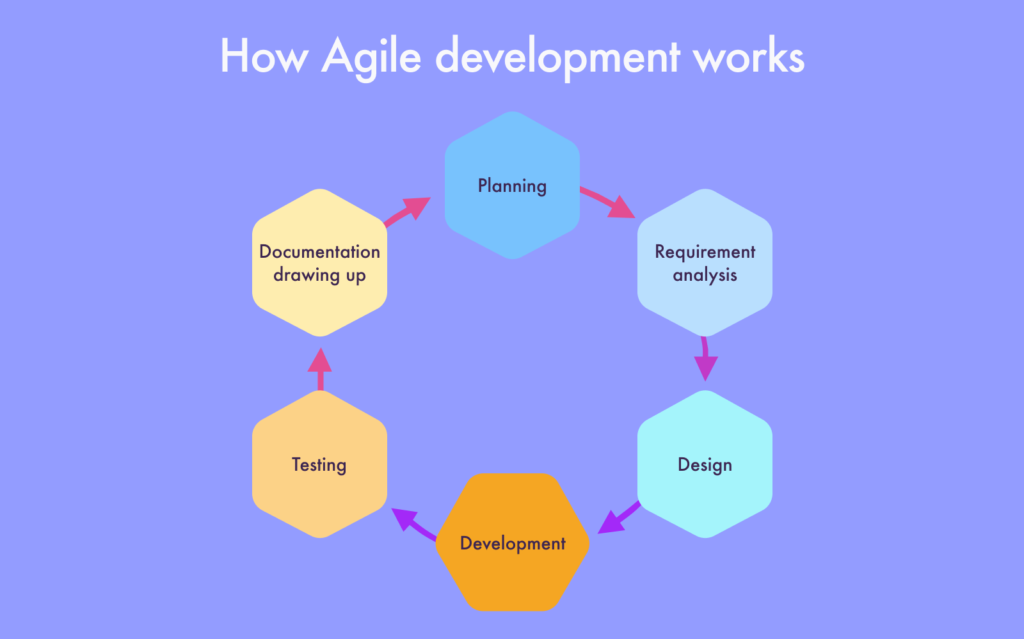In Agile project management, Scrum stands out for its structured yet flexible approach to delivering value. A core aspect of Scrum is its team structure built around specific roles and responsibilities. Unlike traditional methods like Waterfall or other frameworks such as Kanban, Scrum thrives on cross-functional collaboration and clearly defined roles.
Understanding the Scrum team structure is essential, especially for businesses looking to adopt Agile methods successfully. Whether you’re a product owner, Scrum master, or part of the development team, knowing your role is the first step to achieving Scrum team objectives.

If you’re new to Agile, want to upgrade your skills, or are seeking the best Scrum training institute in Hyderabad or anywhere in India, this guide is for you.
Understanding the Scrum Team
A standard Scrum team includes three primary roles:
- Product Owner
- Scrum Master
- Development Team
Each role is essential and serves a unique purpose in driving the success of Agile projects. Let’s take a closer look at each.
The Product Owner
Think of the Product Owner as the mini-CEO of the product. They represent the customer’s voice and ensure the development work aligns with business goals.
Key responsibilities:
Define sprint goals: Align with stakeholders and prioritize tasks.
Manage the product backlog: Keep it updated with user stories, tasks, and priorities.
Create a product vision: Define what the product aims to solve, who it serves, and its value.
The Product Owner plays a critical role in Scrum team training, as their clarity drives the team’s direction.
The Scrum Master
Often misunderstood as a manager, the Scrum Master is more of a servant-leader. Their job is to guide the team in following Agile principles and removing roadblocks.
Core responsibilities include:
Facilitating Agile practices and all Scrum events (e.g., sprint planning, daily stand-ups).
Coaching the team on Agile values and continuous improvement.
Mediating conflicts and removing external disruptions.
Supporting collaboration between the development team and Product Owner.
If you’re aiming to become a Scrum Master, it’s wise to learn from the best training institute in India for Scrum to master these responsibilities.
The Development Team
Unlike the other two roles, this isn’t a single person — it’s a group of professionals with diverse skill sets. The development team is responsible for turning the product backlog into working software.
Important characteristics:
Cross-functional: Includes designers, developers, testers, etc.
Self-organizing: They decide how to accomplish the work.
Accountable: Responsible for delivering quality output.
Collaborative: Participate in all Scrum events and work closely with the other roles.
This team represents the Scrum development team, ensuring the technical side of the project aligns with goals.
How Scrum Teams Work Together?
The Scrum framework encourages transparency, accountability, and communication. Scrum teams typically consist of 10 or fewer members and follow Scrum events such as:
Sprint Planning: Team sets sprint goals and estimates work.
Daily Stand-ups: 15-minute check-ins to discuss progress and blockers.
Sprint Review: A review of what was built, with feedback from stakeholders.
Sprint Retrospective: A session to improve team processes.
Scrum of Scrums: For larger projects with multiple teams, representatives meet to discuss interdependencies.
Tools like Wrike Scrum team roles management software make these meetings efficient, track progress, and promote alignment between distributed teams.
Benefits of a Strong Scrum Management Team
When the Scrum team works well together, you get:
Faster delivery of products
Clear ownership and responsibilities
Continuous improvement
Better alignment with business goals
With proper Scrum team training, you can prepare your team to face real-world Agile challenges confidently. Enrolling in the best Scrum training institute in Hyderabad or opting for India’s top online programs can equip your team with practical skills and certifications.
The Scrum team structure isn’t just a formality — it’s the backbone of effective Agile development. From the visionary product owner to the guiding Scrum master and the expert development team, every role is crucial in achieving Scrum team objectives.
Whether you’re just starting or looking to scale, investing in training from the best Scrum training institute in India can transform how your teams collaborate and deliver.
Explore tools like Wrike for enhanced digital collaboration and boost your team’s ability to meet sprint goals. Agile success starts with the right roles, the right training, and the right mindset.
Frequently Asked Questions
- What are the three main roles in a Scrum team?
The three core roles are the Product Owner, Scrum Master, and Development Team. Each plays a crucial part in delivering Agile projects effectively.
- Why is the Scrum Master important?
The Scrum Master facilitates Agile practices, ensures smooth collaboration, removes roadblocks, and keeps the team aligned with Scrum principles.
- What makes the development team in Scrum unique?
They are cross-functional, self-organizing experts responsible for turning backlog items into working product increments.
- How can I get certified in Scrum roles?
Look for the best Scrum training institute in Hyderabad or online programs in India offering certification courses for Product Owner or Scrum Master roles.
- Can Wrike help manage Scrum teams?
Yes, Wrike provides Agile project management tools that support sprint planning, backlog management, and team collaboration — ideal for Scrum management teams.
